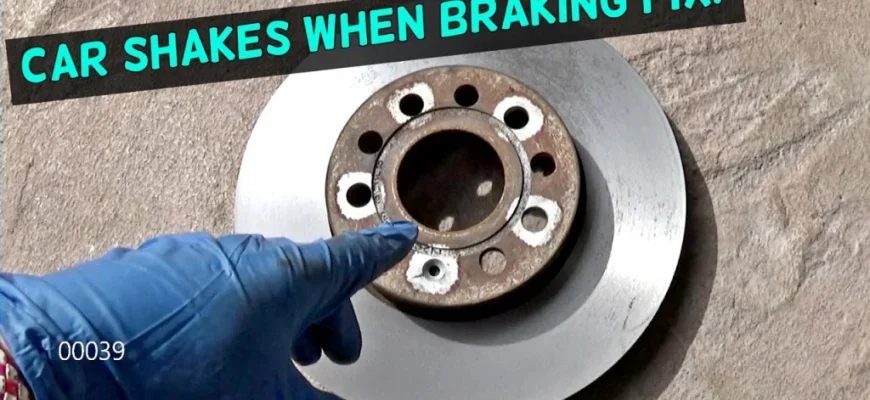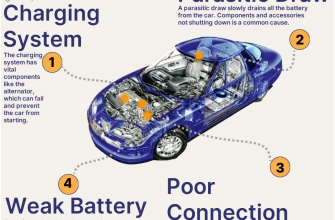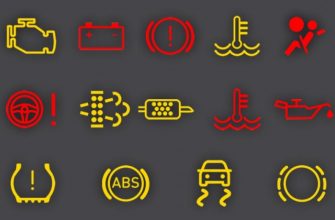A shaking car when braking is a common, yet concerning, problem. It indicates an issue within the braking system or related components. Ignoring it can lead to reduced braking performance and potentially dangerous situations. This article outlines common causes, diagnostic steps, and potential repairs.
- Causes of Car Shaking During Braking
- Diagnosing the Shaking
- Repairing the Problem
- Preventing Future Issues
- When to Seek Professional Help
- Cost Considerations
- Advanced Diagnostic Techniques
- Understanding Brake System Technology
- The Importance of Quality Parts
- DIY vs. Professional Repair: A Balanced Perspective
- Long-Term Brake Health: A Proactive Approach
Causes of Car Shaking During Braking
- Warped Brake Rotors: This is the most frequent culprit. Heat and friction can cause rotors to warp unevenly, resulting in vibrations felt through the steering wheel or brake pedal when pressure is applied.
- Uneven Brake Pad Wear: If brake pads wear unevenly, one side may grip the rotor more strongly than the other, causing a shudder.
- Sticking Brake Calipers: A caliper that isn’t releasing properly can cause constant pressure on the rotor, leading to overheating, warping, and vibrations.
- Suspension Issues: Worn ball joints, tie rod ends, or control arm bushings can contribute to shaking, especially under braking. These components help maintain wheel alignment and stability.
- Wheel Bearings: Loose or damaged wheel bearings can cause vibrations that are amplified when braking.
- Tire Problems: Unbalanced or damaged tires can sometimes manifest as shaking during braking.
Diagnosing the Shaking
Proper diagnosis is crucial for effective repair.
- Inspect Brake Rotors: Visually check rotors for signs of warping, scoring, or excessive rust. A dial indicator can measure runout (warping) accurately.
- Examine Brake Pads: Assess brake pad thickness and wear pattern. Uneven wear indicates a potential caliper or suspension problem.
- Check Brake Calipers: Ensure calipers move freely and aren’t sticking. Look for signs of leaks.
- Inspect Suspension Components: Check ball joints, tie rod ends, control arm bushings for play or damage.
- Test Wheel Bearings: Listen for unusual noises (grinding, humming) when rotating the wheels. Check for play by attempting to move the wheel laterally.
- Tire Inspection: Look for bulges, uneven wear, or signs of damage. Have tires balanced.
Repairing the Problem
The repair will depend on the underlying cause.
- Brake Rotor Replacement or Resurfacing: Warped rotors often require replacement. Resurfacing is sometimes possible if the warping is minor.
- Brake Pad Replacement: Replace brake pads in pairs to ensure even braking force.
- Brake Caliper Repair or Replacement: Repair or replace sticking calipers to ensure proper brake function.
- Suspension Component Replacement: Replace worn or damaged ball joints, tie rod ends, or control arm bushings.
- Wheel Bearing Replacement: Replace damaged wheel bearings to restore smooth wheel rotation.
- Tire Balancing or Replacement: Balance or replace damaged tires to eliminate vibrations.
Addressing the shaking promptly ensures safe braking and prevents further damage to your vehicle. Consult a qualified mechanic for diagnosis and repair if you are unsure.
Preventing Future Issues
While addressing the immediate cause of the shaking is essential, preventative maintenance can minimize the risk of recurrence. Consider these tips:
- Regular Brake Inspections: Have your brakes inspected regularly (at least annually) by a qualified mechanic. This allows for early detection of potential problems.
- Proper Braking Habits: Avoid harsh braking whenever possible. Gradual, controlled braking reduces heat buildup and wear on braking components.
- Follow Brake Pad Replacement Intervals: Replace brake pads according to the manufacturer’s recommended intervals. Don’t wait until they are completely worn down.
- Maintain Proper Wheel Alignment: Proper wheel alignment ensures even tire wear and reduces stress on suspension components.
- Use Quality Brake Components: When replacing brake components, opt for reputable brands and quality parts. This ensures better performance and longevity.
- Brake Fluid Flush: Brake fluid absorbs moisture over time, which can lead to corrosion and reduced braking performance. Flush and replace brake fluid according to the manufacturer’s recommendations.
When to Seek Professional Help
While some diagnostic steps can be performed at home, it’s crucial to seek professional help in certain situations:
- Uncertain Diagnosis: If you’re unable to pinpoint the cause of the shaking.
- Complex Repairs: Repairs involving calipers, suspension components, or wheel bearings often require specialized tools and expertise.
- Safety Concerns: If you’re uncomfortable performing brake repairs yourself. Brakes are a critical safety system, and improper repairs can have serious consequences.
- Persistent Shaking: If the shaking persists after attempting basic repairs.
A qualified mechanic can accurately diagnose the problem and perform the necessary repairs to ensure your vehicle’s braking system is functioning safely and effectively.
Cost Considerations
The cost of repairing a shaking car during braking varies depending on the cause and the extent of the damage. Factors influencing the cost include:
- Parts: The cost of brake pads, rotors, calipers, suspension components, or wheel bearings.
- Labor: The mechanic’s hourly rate and the estimated time required for the repair.
- Vehicle Make and Model: Some vehicles have more complex braking systems or require specialized parts, which can increase the cost.
Obtain quotes from multiple mechanics to compare prices and ensure you’re getting a fair deal. Don’t automatically choose the cheapest option; consider the mechanic’s reputation, experience, and the quality of the parts they use.
A shaking car when braking is a sign of a problem that requires attention. By understanding the potential causes, diagnostic steps, and repair options, you can take proactive steps to address the issue and ensure your vehicle’s braking system is functioning safely and effectively. Regular maintenance and prompt repairs are key to preventing future problems and maintaining the safety of your vehicle.
Advanced Diagnostic Techniques
While visual inspection and basic tests can identify many common causes of brake shaking, more advanced diagnostic techniques may be necessary in complex cases. These techniques often involve specialized equipment and a deeper understanding of automotive systems.
- Road Force Balancing: This type of balancing simulates the force of the road on the tire and wheel assembly, identifying imbalances that may not be apparent with traditional balancing methods. It’s particularly helpful in diagnosing vibrations related to tire or wheel issues.
- On-Car Rotor Truing: In some cases, rotors can be trued (resurfaced) while still mounted on the vehicle. This ensures that the rotor is perfectly aligned with the hub and bearings, minimizing the risk of vibrations.
- Electronic Brake System (EBS) Diagnosis: Modern vehicles have sophisticated EBS systems that can sometimes contribute to braking vibrations. A diagnostic scan tool can be used to check for fault codes and monitor the performance of various EBS components, such as ABS sensors and electronic stability control (ESC) systems.
- Vibration Analysis: Specialized vibration analysis equipment can pinpoint the source of vibrations by measuring their frequency and amplitude. This can help differentiate between brake-related vibrations and those originating from other parts of the vehicle, such as the engine or transmission.
Understanding Brake System Technology
Modern brake systems are more complex than ever before. Understanding the different types of brake systems and their components can help you better understand the potential causes of brake shaking.
- Disc Brakes: The most common type of brake system, disc brakes use calipers to squeeze brake pads against rotors, generating friction to slow the vehicle.
- Drum Brakes: Older vehicles may still use drum brakes, which consist of brake shoes that press against the inside of a rotating drum.
- Anti-lock Braking System (ABS): ABS prevents the wheels from locking up during braking, allowing the driver to maintain steering control. A malfunctioning ABS system can sometimes cause unusual vibrations.
- Electronic Stability Control (ESC): ESC helps prevent skidding by automatically applying brakes to individual wheels. Problems with ESC can also contribute to brake shaking.
- Regenerative Braking: Hybrid and electric vehicles use regenerative braking to recover energy during deceleration. Issues with the regenerative braking system can sometimes cause unusual braking feel.
The Importance of Quality Parts
When replacing brake components, it’s crucial to use high-quality parts from reputable manufacturers. Cheaper, inferior parts may not meet OEM specifications and can lead to premature wear, poor performance, and increased risk of vibrations.
- Brake Pads: Choose brake pads that are designed for your vehicle’s specific braking needs. Consider factors such as friction coefficient, noise levels, and dust generation.
- Brake Rotors: Ensure that replacement rotors are made from high-quality materials and are properly balanced. Look for rotors that meet or exceed OEM specifications.
- Calipers: If replacing calipers, choose remanufactured or new calipers from a reputable supplier. Ensure that the calipers are properly lubricated and that the pistons move freely.
DIY vs. Professional Repair: A Balanced Perspective
Some brake repairs, such as replacing brake pads, can be performed by experienced DIYers. However, more complex repairs, such as replacing calipers or suspension components, should be left to qualified mechanics. When deciding whether to tackle a brake repair yourself, consider your skill level, the complexity of the repair, and the potential safety risks.
- DIY Advantages: Cost savings, satisfaction of doing it yourself.
- DIY Disadvantages: Potential for errors, risk of injury, voiding warranty.
- Professional Advantages: Expertise, specialized tools, warranty on parts and labor.
- Professional Disadvantages: Higher cost.
Long-Term Brake Health: A Proactive Approach
Maintaining your vehicle’s braking system is an ongoing process. By adopting a proactive approach to brake maintenance, you can help prevent problems and ensure the long-term health of your braking system.
- Regular Inspections: Schedule regular brake inspections with a qualified mechanic.
- Proper Driving Habits: Avoid aggressive driving and harsh braking.
- Prompt Repairs: Address any brake problems promptly.
- Fluid Maintenance: Flush and replace brake fluid according to the manufacturer’s recommendations.
- Component Quality: Use high-quality replacement parts.










Very informative and easy to understand. A well-written article.
This article saved me a trip to the mechanic! I was able to diagnose the issue myself.
A fantastic resource for anyone experiencing car shaking during braking. Highly recommended!
Excellent breakdown of the causes! Very helpful for understanding the problem.
I found the section on suspension issues particularly insightful. Thanks!
The explanation of warped rotors is spot on. This is exactly what I was looking for.
The diagnostic steps are clearly explained. I appreciate the practical advice.
Comprehensive overview of potential issues. A great starting point for troubleshooting.